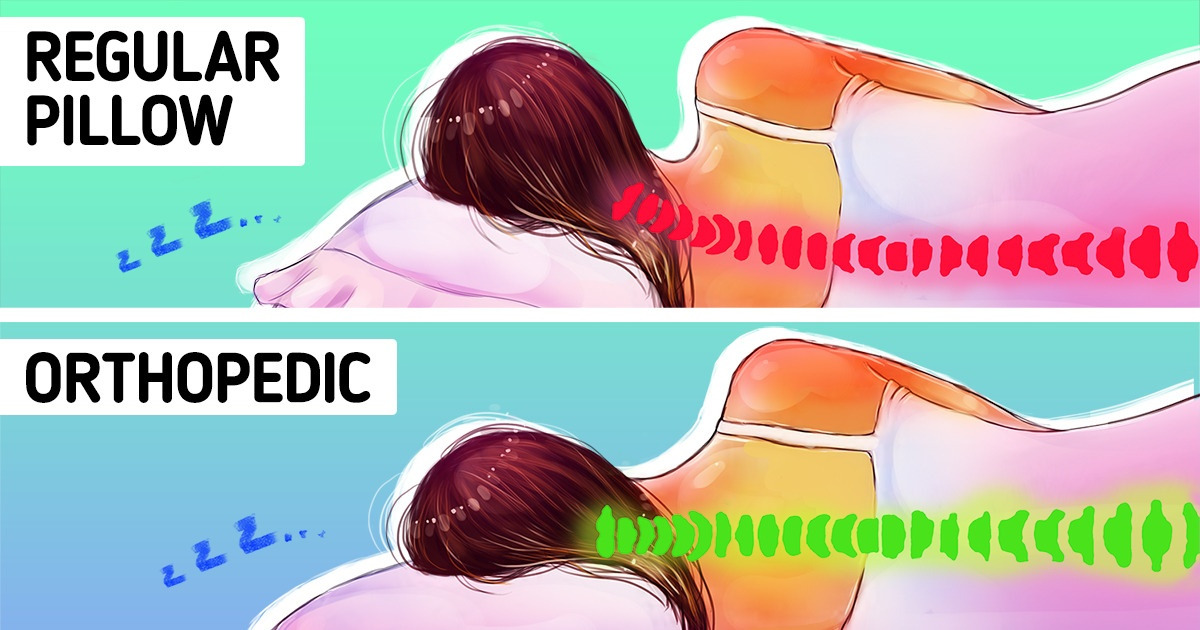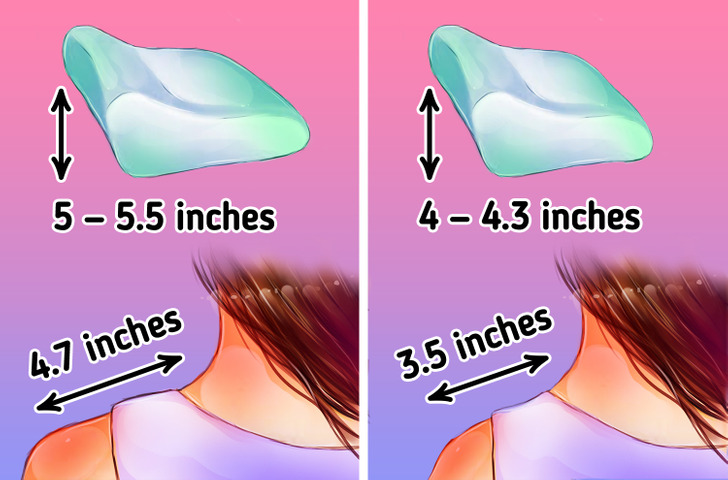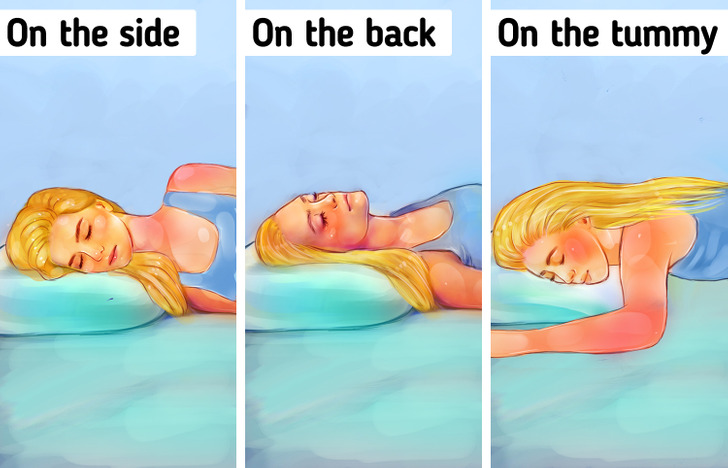How to Sleep on an Orthopedic Pillow Correctly

We all know that deep and healthy sleep is the guarantee of a good well-being and mood. It’s easy to remember this fact but it’s not always easy to implement it in real life. One of the important components in our nightly rest is the choice of correct accessories like pillows, blankets, and bed linens.
Today, we at 5-Minute Crafts decided to figure out what an orthopedic pillow is and what its main benefits are. Spoiler: it’s likely that after reading this article, you’ll no longer want to sleep on a usual pillow.
The use of an orthopedic pillow
The purpose of a pillow is to support the head and neck during sleep, and keep the body in a so-called neutral position. This helps to reduce unnecessary pressure on the nerves, muscles, and spinal discs. All because they wear out with age, and we become more sensitive to the conditions of our sleep. The purpose of an orthopedic pillow is to minimize discomfort.
Traditional pillows have several disadvantages. If they are too thin or too thick, the neck will be slept on at an uncomfortable angle. A too soft pillow will crumple too easily and won’t be able to give support to the head and neck during sleep.
Things to consider when buying an orthopedic pillow

One of the main things you should pay attention to when choosing a pillow is its height. It can vary between 4 and 5.5 inches. The height of the pillow depends on the person — a bigger person needs a higher pillow, a smaller one needs a lower pillow.
Sometimes it can be difficult to do all the calculations but it’s important to get into a position where your spine (including your neck) will be located parallel to the bed. The height of the pillow also depends on the position in which you sleep most often. For example, if you are used to sleeping with your hand under your pillow, then this aspect should be considered when choosing the size and shape of it.
If you sleep on your back, then the pillow should be of medium height, but lower than for those who like to sleep on their side. The thinnest pillow is suitable for those who like to sleep on their tummy. This will protect both your head and neck from tension. It’s recommended for people who prefer this pose to put an extra flat pillow under their tummy to keep the back in a natural position.
Useful tips

- If you are used to sleeping on your back, you should consider getting a firm pillow in a medium height. Softer versions are good for those who like to sleep on their tummy.
- It’s important to remember that orthopedic pillows support not only the head but also the neck. The pillow occupies the free space between the head and neck, allowing the muscles to relax completely.
- If you like to sleep on your side, make sure your chin is located straight and that it’s neither down nor up. If you are comfortable in this position and don’t feel any discomfort, then most likely you have chosen the right height and shape.
- A standard orthopedic pillow has 2 sides — high and low. They are there so that a person can choose a comfortable option for themselves. If you prefer to sleep on your back, it’s likely that you’ll find sleeping on a low pillow comfortable. If you are a fan of sleeping on your side then you’d better go for a thicker one.
- Pay attention: some pillows heat up faster than others. This can be frustrating for people who get warmer at night. However, good ventilation of the room will solve this issue.
We hope this information was useful for you. You can read more about what sleeping postures to choose and how they will affect your well-being here.